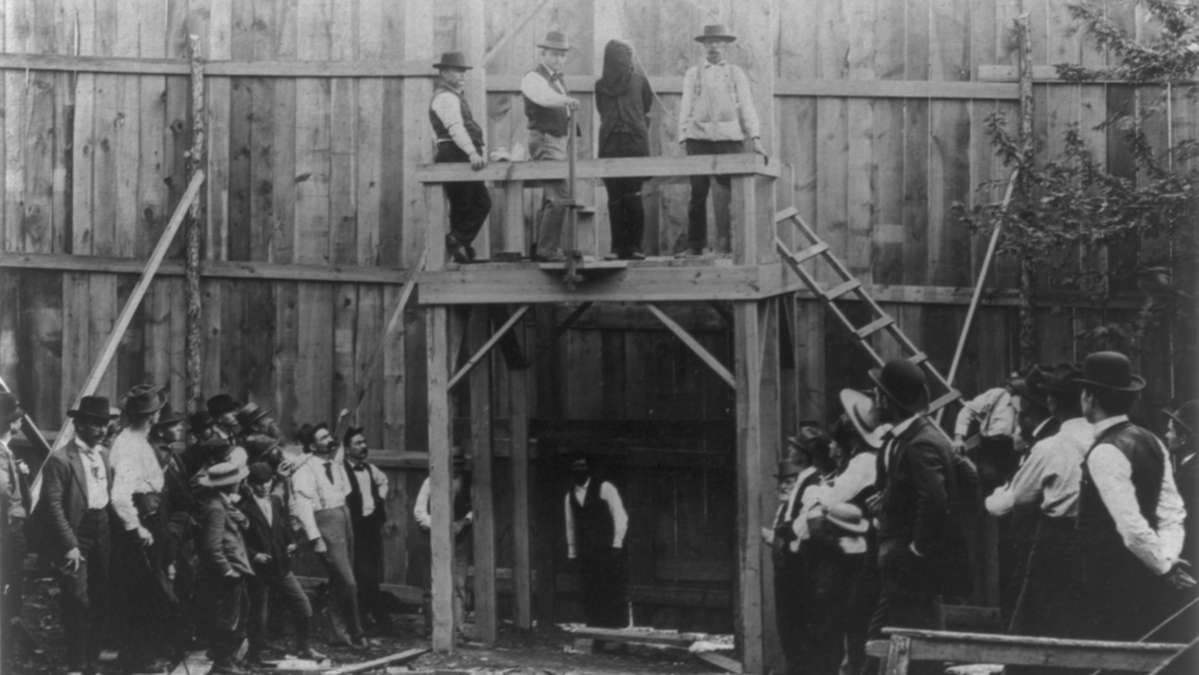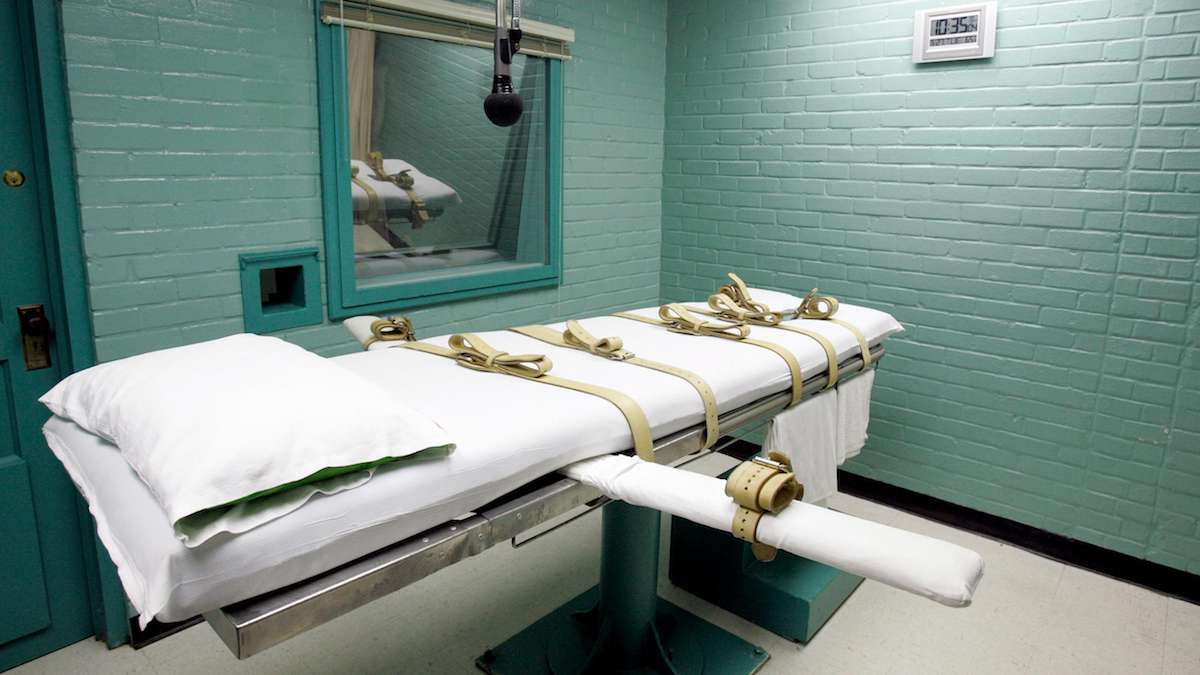The myth of a kinder, gentler execution.
ListenDid Joseph Wood suffer when he was executed in Arizona last month?
Some witnesses reported that Wood gasped over 600 times during his July 23 execution by lethal injection, which took nearly two hours. But one official said that Wood “appeared to be snoring,” while another stated flatly that the inmate “did not endure pain.” We’ll never know.
But here’s what we do know: the quest for a pain-free mechanism of capital punishment is a fool’s errand. As Amherst professor Austin Sarat shows in a terrific new book, we have spent two centuries trying to put people to death without putting them in discomfort. And it hasn’t worked.
Start with hanging, which Englishmen brought to our shores during the colonial era. But they did not import professional hangmen, so executions fell to sheriffs and other local officials.
Too often, they had no idea what they were doing. Poorly tied ropes snapped, earning the condemned a return trip to the gallows. Or sometimes the rope wasn’t taut enough, so executioners had to pull on the prisoner’s legs until he expired.
The big problem was that hanging usually choked people to death—a slow and grueling process—instead of breaking their necks. So communities erected higher gallows, in the hopes that a so-called “long drop” would insure a quick and painless demise. They also devised pulley systems to jerk the prisoner’s head upwards, instead of relying on gravity alone.
But many inmates still gurgled and choked for long stretches of time; others were decapitated, generating lurid newspaper headlines. So Americans turned to the new technology of electricity, which promised to execute prisoners “in a less barbarous manner,” as New York’s governor declared in 1885.
Five years later, Philadelphia-born William Kemmler would become the first American to die in an electric chair. Kemmler had killed his wife when she admitted to an affair with one of his co-workers in Buffalo. After he was sentenced to die “by the application of electricity,” Kemmler’s lawyers tried to block the execution on the grounds that it violated the 8th Amendment’s prohibition on cruel and unusual punishment.
The appeal generated its own fireworks, pitting Thomas Edison—the father of modern electricity—against his chief competitor, George Westinghouse. Although Edison personally opposed the death penalty, he was eager to demonstrate the superiority of direct current—the system he devised–and the dangers of alternating current, which Westinghouse had patented.
So Edison took the stand and testified that alternating current was much more lethal than the direct kind—and that it would likely kill a prisoner with speed and without pain. But William Kemmler discovered otherwise. It took the state over eight minutes—and shocks of 2,000 volts—to kill Kemmler, after his sentence was upheld. White smoke wafted from his body, which heaved and convulsed before he finally died.
Other states reported that electrocuted inmates actually caught on fire, which led to the development of yet another death-penalty technology: the gas chamber. Its first use came in Nevada, which executed a convicted murderer in 1924 with a poison used to fumigate citrus trees. When railroads refused to transport the substance from its manufacturer in Los Angeles, a warden’s aide was dispatched to pick it up in his own truck.
Over the next two decades, 10 other states authorized executions by lethal gas. But prisoners retched and convulsed in the presence cyanide and other poisons, whose chemical properties were poorly understood; and by the late 1940s, widespread reports of Nazi gas chambers further discredited this method.
So most states used electrocutions until 1977, when Oklahoma adopted lethal injection as an alternative to the “inhumanity, visceral brutality, and cost” of the electric chair, as one advocate proclaimed. Today, 32 states allow the death penalty by lethal injection. But the inhumanity and brutality of the death penalty haven’t gone away; they just assume different forms.
Sometimes prison officials can’t find a vein, so they prod inmates repeatedly or scrape off their top layers of skin. And once the drugs enter their systems, inmates exhibit many of the same behaviors that earlier methods spawned: choking, convulsing, spitting, and more.
Indeed, we really have no idea what effects different drugs will have. States used to inject a three-drug “cocktail,” which they discontinued after manufacturers refused to continue selling it to them. So Joseph Wood received an opioid painkiller and a sedative, which would allegedly produce a timely and pain-free death.
Of course, that’s impossible. Wood murdered his ex-girlfriend and her father, so perhaps he deserved to suffer. But in that case, we’ll have to abandon the myth of a kindler, gentler death penalty. Killing is a barbarous act, period. And there is no humane way to do it.
Jonathan Zimmerman is a professor of history and education at New York University. He is the author of “Too Hot to Handle: A Global History of Sex Education,” which will be published next year by Princeton University Press.
WHYY is your source for fact-based, in-depth journalism and information. As a nonprofit organization, we rely on financial support from readers like you. Please give today.




